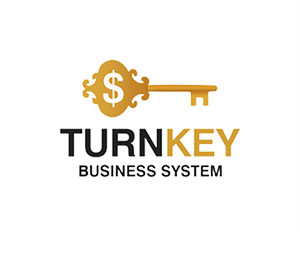
Binary Options Reality Check
The $10 Billion Annual Fraud That Regulators Couldn't Ignore
Binary options represent one of financial history's most controversial instruments—a product so problematic that major regulators worldwide systematically banned it for retail investors between 2018 and 2021, yet it continues operating through offshore platforms that victimize thousands annually.Understanding Binary Options: The All-or-Nothing Proposition
Binary options are financial derivatives offering traders a simple yes-or-no proposition: predict whether an underlying asset's price—stocks, currencies, commodities, indices—will rise above or fall below a specified level within a predetermined timeframe, typically ranging from 60 seconds to several hours.If the prediction proves correct at expiration, the trader receives a fixed payout, usually 70-85% of the invested amount. If incorrect, the trader loses the entire investment. This binary structure—win a fixed amount or lose everything—fundamentally differs from traditional options where profit potential remains unlimited and losses can be managed through position closing before expiration.
The Chicago Board Options Exchange introduced exchange-traded binary options in 2008, providing the first regulated binary options framework in the United States. However, the vast majority of binary options trading occurs through over-the-counter platforms where retail clients trade directly against the broker rather than through neutral exchanges.
This structural arrangement creates inherent conflicts of interest—the platform only profits when clients lose money, providing direct incentive for manipulation, unlike exchanges where the operator facilitates trades between parties without taking positions. The distinction between exchange-traded and OTC binary options becomes critical when evaluating legitimacy and fairness.
The appeal for novice traders appears obvious: binary options eliminate complexity through straightforward up-or-down predictions requiring no understanding of strike prices, Greeks, or advanced options strategies.
Minimum trades start as low as $10-25, making entry accessible for small capital traders. Platforms advertise fixed risk—you know your maximum loss before entering—and promise quick results with some contracts expiring in minutes.
Marketing materials emphasize simplicity, accessibility, and profit potential while systematically downplaying or concealing the mathematical disadvantages and fraud risks that ensure most traders lose.

Binary Options Reality Check
The Alleged Advantages: Marketing Promises Versus Reality
Binary options marketing emphasizes several purported advantages that deserve critical examination against actual trading conditions.Simplicity and Accessibility: Proponents claim binary options democratize financial markets by eliminating complexity—traders need only predict price direction, not calculate complex valuations or manage multi-leg strategies. This simplicity proves illusory in practice. While mechanics appear straightforward, predicting short-term price movements with 56%+ accuracy required for profitability demands sophisticated technical analysis, fundamental understanding, and market timing expertise that novices lack. The apparent simplicity attracts inexperienced traders who misunderstand that easy-to-understand mechanics don't equate to easy profits.
Fixed Risk and Defined Outcomes: Marketing materials emphasize knowing maximum loss before entering trades—invest $100, lose maximum $100.
Quick Results and High Returns: Platforms advertise 60-second contracts and 70-85% payouts, promising rapid wealth accumulation.
Low Capital Requirements: Minimum trades starting at $10-25 appear advantageous for small-capital traders excluded from traditional markets by higher minimums. However, small position sizes combined with fixed-percentage payouts make meaningful profit accumulation nearly impossible.
A trader with a $500 account making $25 trades needs extraordinary win rates to grow capital while covering inevitable losing streaks. The low minimums primarily serve brokers by encouraging constant trading and rapid account churn.
The Two-Year Outlook: Binary Options in 2025-2027
Status Quo Scenario (70% probability): Major economies maintain permanent bans on retail binary options, with periodic enforcement actions against illegal operators targeting their citizens.Crypto Migration Scenario (10% probability): Binary options operators successfully transition to decentralized finance platforms operating on blockchain networks beyond traditional regulatory reach.
Smart contract-based binary options eliminate centralized operator fraud risk but maintain structural disadvantages and introduce smart contract vulnerabilities and oracle manipulation risks.
DeFi binary options attract crypto-native traders while traditional retail investors remain protected by existing bans. Regulators struggle to address decentralized infrastructure, creating bifurcated market: heavily regulated traditional finance versus permissionless but risky DeFi alternatives. Expected outcome: binary options persist in evolved forms with different risk profiles but similar negative expectancy for retail participants.
The answer to whether retail traders should consider binary options is unambiguous: no.
By Miles Harrington
November 17, 2025
Join us. Our Telegram: @forexturnkey
All to the point, no ads. A channel that doesn't tire you out, but pumps you up.
November 17, 2025
Join us. Our Telegram: @forexturnkey
All to the point, no ads. A channel that doesn't tire you out, but pumps you up.














Report
My comments